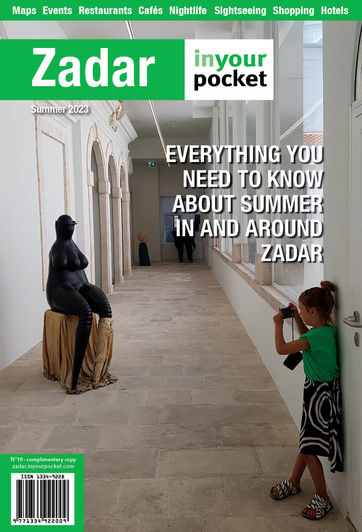Zadar History
more than a year ago
Meanwhile, the Croatian state was forming inland, and trade and political links with Zadar began to develop. Croatian settlers began to arrive, becoming commonplace by the 10th Century. Zadar sought independence from Byzantium, and in 1069 was joined by treaty to Croatia under Croatian King Petar Krešimir IV. In 1102, the Croatian-Hungarian state was formed, and in 1105 Zadar officially recognised the authority of the Croatian-Hungarian kings.
The rivalry with Venice intensified, and at the end of the first millenium the Venetians began a series of onslaughts and occupations that were to last over three hundred years. In 1202 the Venetians launched a particularly bitter attack with the help of the Crusaders, whom the Venetian Doge used in his march towards Palestine. This ended in 1358, when, in a peace treaty concluded in the Franciscan church, Zadar was handed over to the protection of the Croatian-Hungarian King Ludwig I of Anjou.
Despite all this violence, between the 11th and the 14th century a golden age of art and culture was nurtured behind the protective walls encircling the city. Zadar still played a key role in the administration of Dalmatia, and enjoyed growth in political and commercial life. Architecture dating back to this time includes the Cathedral of St. Anastasia, and many other churches, monasteries, convents, palaces and public buildings.
In the 15th century, internal fights within the Croatian-Hungarian state resulted in its loss of influence in Dalmatia, and Zadar, together with much of the surrounding mainland and islands, were sold to Venice for 100 000 ducats. Although there was widescale repression of the local inhabitants, Zadar remained the capital of Dalmatia under Venice. It was the main port and naval base on the East Adriatic. Building continued – this was the late Gothic and early Renaissance period.
In the 16th century, Turkey invaded inland Dalmatia, and Zadar retreated behind reinforced bastions, and, aided by the Venetian colonisers, became the largest city-fortress in the Venetian Republic. Although trade withered, art and culture experienced a further period of blossoming. Plague, however, ravaged the city.
In 1699, a peace was concluded with the Turks signalling the end of war. A century later, Napoleon's armies defeated Venice, and Zadar and Dalmatia were peacefully attached to the Hapsburg Empire, only to be handed back to the French in 1805. Under the French, Zadar enjoyed eight years of social reform and awakening of public consciousness, until the Austrians took the city back again in 1813.
The Austrians administered the region from Zadar for the next hundred years. The regime, although strict, was in many ways progressive. Museums were founded, road links improved, and the first modern city water system was completed in 1838. Croatians in Zadar, with an ever-growing awaress of national identity, began to press for linguistic and political autonomy. The Dalmatian Parliament (Sabor) was founded in 1861. Peace reigned, and in 1868, some of the outer fortifications surrounding the Old Town were dismantled, giving the southern side (the Riva) its present promenade. Parks were built, and cultural life prospered once more. In 1898 Zadar was connected to the electricity grid – the first town in what is now Croatia.
In 1918, the Austro-Hungarian Empire collapsed, and the 1920 treaty of Rapallo between Italy and the Kingdom of Serbs, Croats and Slovenes handed a section of the coast, including Zadar, to the Italians, who called it Zara. Zadar remained under Italian rule until it was occupied by the Germans, then liberated by the Allies in 1944, to become part of Tito's Yugoslavia. Unfortunately, in the process, they bombed 65 percent of the city to ruins.
However, in the 1950s an enthusiastic programme of rebuilding took place. Many of the buildings on Široka ulica (or Kalelarga) the beloved main throroughfare of the old town, date back to this time. Industry developed and the population expanded fivefold from its post-war number of 6000. In the 1960s, the importance of tourism grew.
Relative peace and prosperity began to fall apart during the 1980s when economic problems and the decay of the Socialist bloc led to national unrest. Croatia found itself in an untenable position within the borders of Yugoslavia, and Zadar in an even more uncomfortable position with a volatile Serb majority in the Krajina hinterland. During the war of 1991-1995, Zadar was under siege for three months, and bombarded from positions further afield for most of the duration of the war. The population was forced underground, surviving on inadequate supplies of food and water.
Though the scars of all these wars are still visible, rebuilding is now taking place in every sense.





Comments